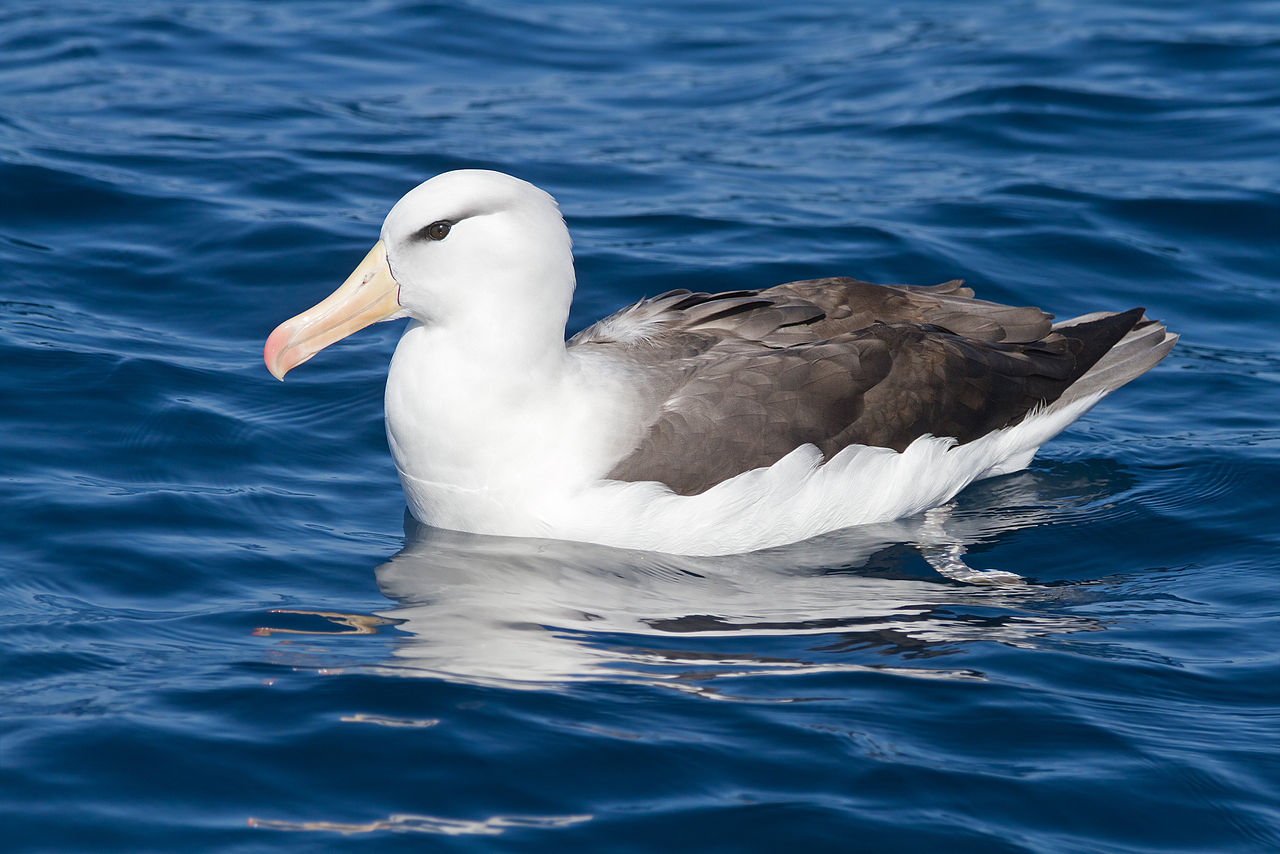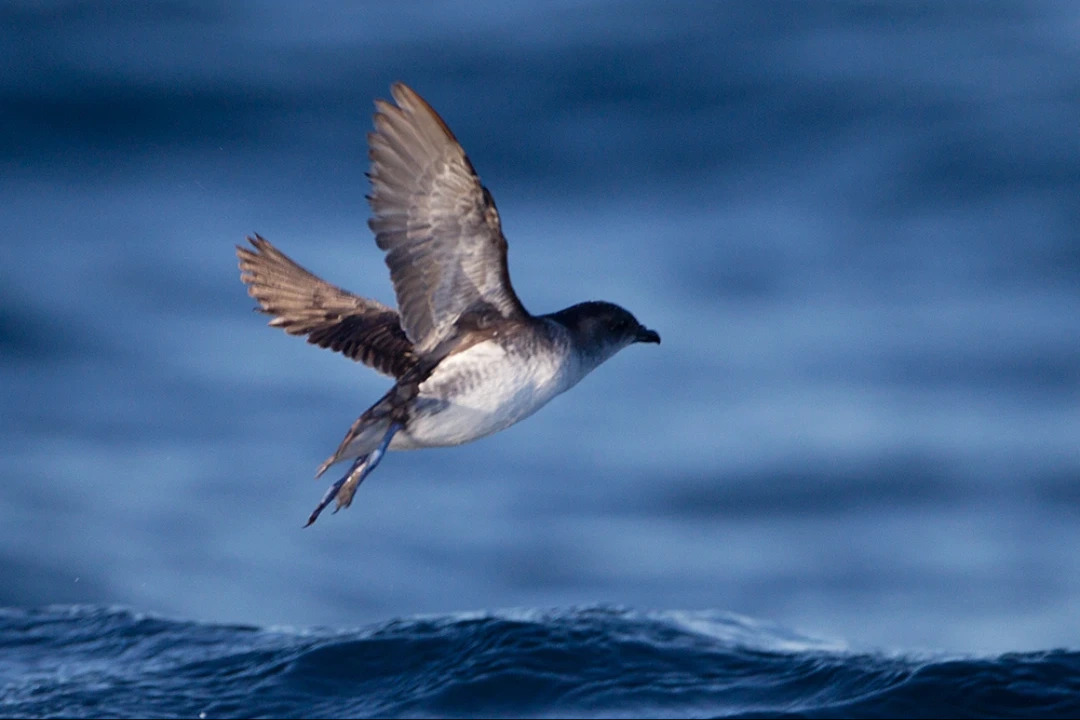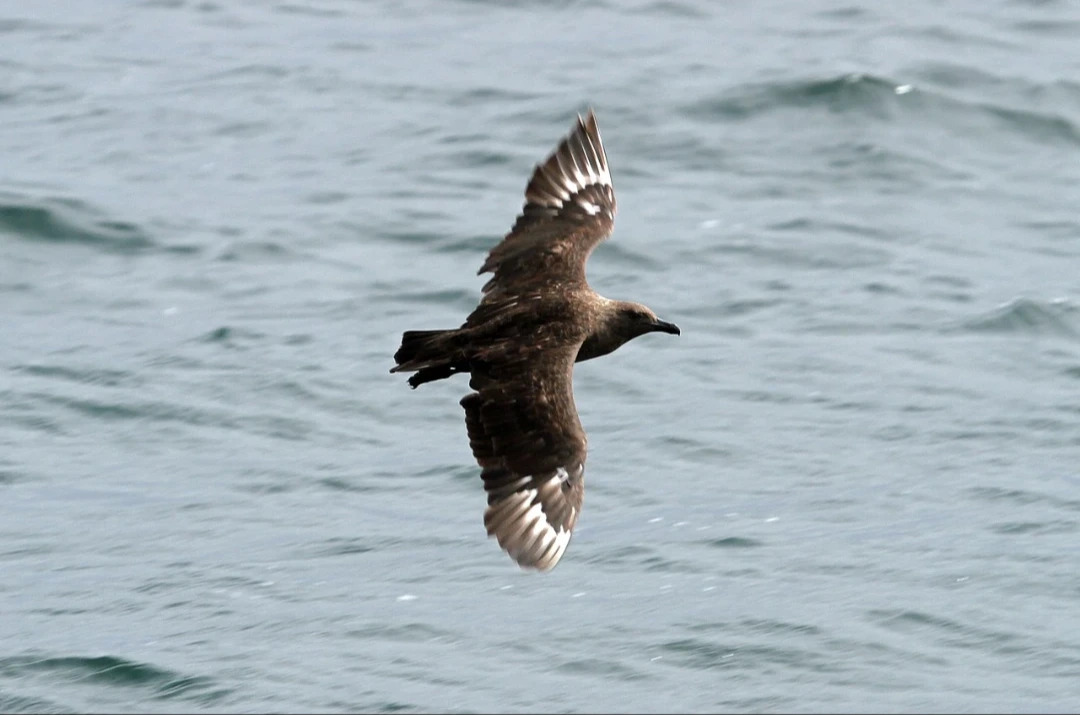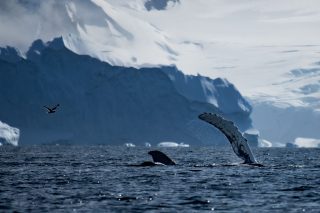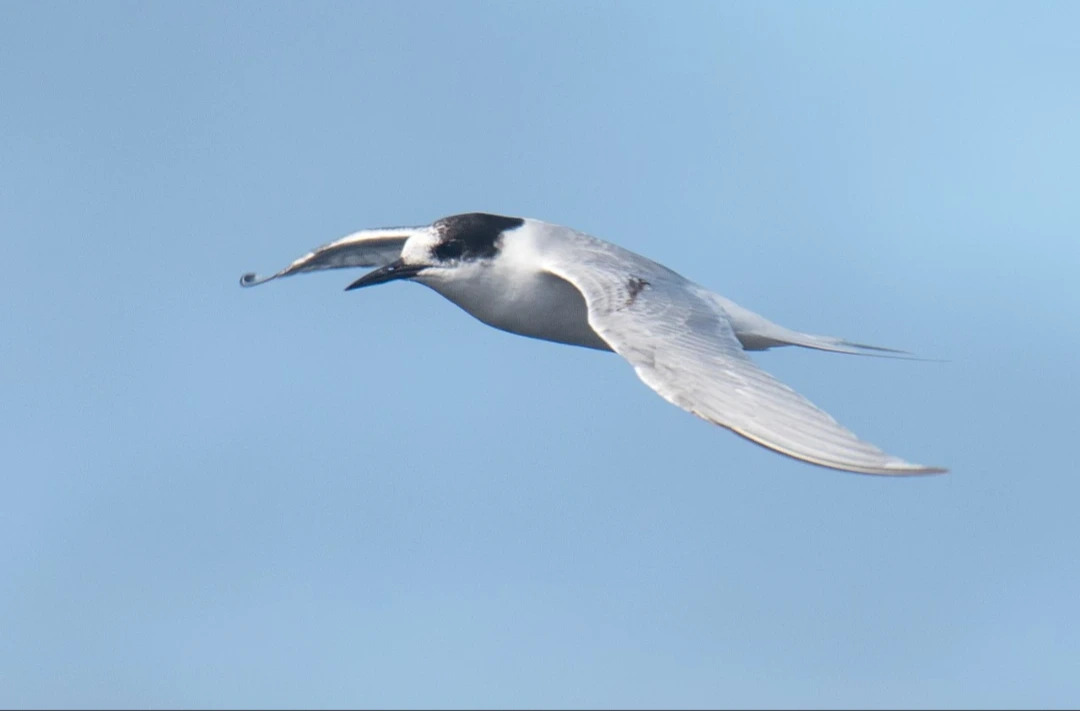Birds of South Geogia and the Falkland Islands
The birds of South Georgia and the Falkland Islands exhibit remarkable diversity and have evolved specialised adaptations to endure the harsh conditions of the Southern Ocean. These islands, positioned in remote oceanic waters, serve as crucial breeding grounds for various seabirds, including albatrosses, petrels, and several penguin species.
The unique climate and rich marine resources in this region shape the behaviour and ecological interactions of these avian populations, fostering complex relationships within their ecosystems. Understanding these interactions is essential for informed conservation efforts, especially as many bird species face growing threats from climate change, invasive species, and human activity.
This page describes the key bird species of South Georgia and the Falkland Islands, examining their ecological roles and highlighting the conservation challenges they encounter in this fragile and changing environment.
Key Species
Falkland Steamer Duck (Tachyeres brachypterus)
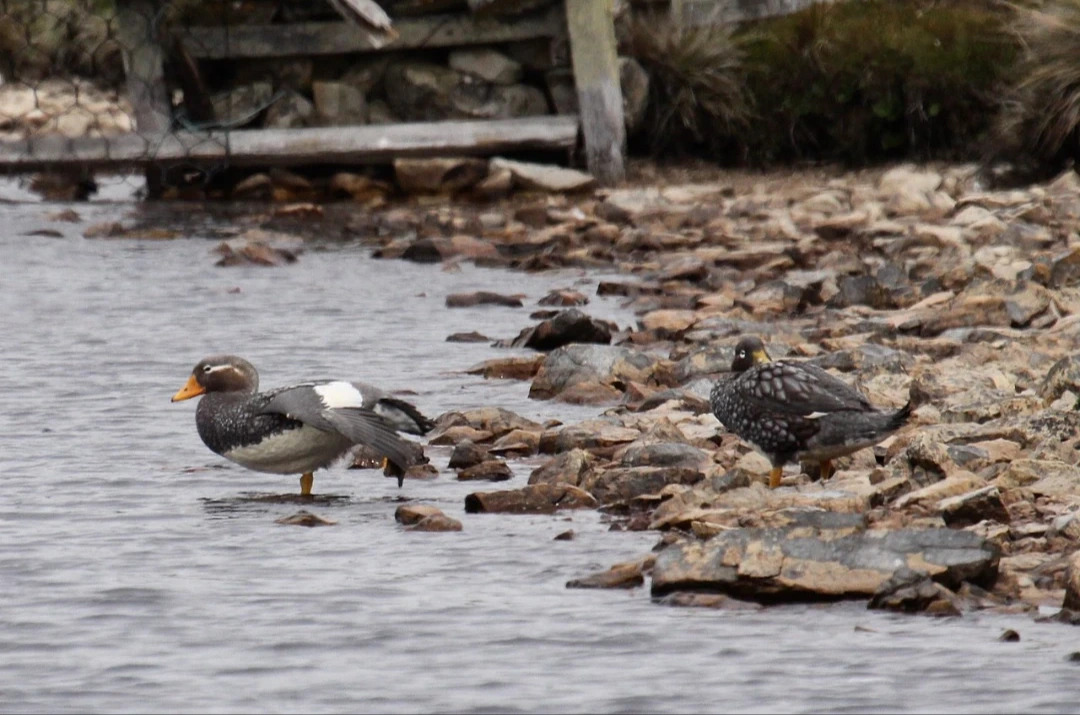
The Falkland steamer duck, a robust and distinctive bird, is a powerful symbol of survival and adaptability in the rugged maritime environments of the Falkland Islands. With its heavy body, strong limbs, and limited flight capabilities, this species exemplifies the unique adaptations required for thriving along the cold, wave-swept shores of the South Atlantic.
The Falkland steamer duck’s life, characterized by its peculiar locomotion that mimics a paddle steamer and its territorial behaviour, offers fascinating insights into the evolutionary paths of waterfowl. As a resident bird, its feeding habits and reproductive strategies are closely intertwined with the coastal ecosystems of the Falklands, playing a significant role in maintaining the ecological balance of these habitats.
Appearance and Size
The Falkland steamer duck is a large, flightless waterfowl, measuring about 65 to 74 cm (26 to 29 inches) in length, and weighing up to 3.5 to 4.5 kg (7.7 to 9.9 lbs). It exhibits a predominantly dark grey plumage with lighter speckles and a distinctive white stripe behind the eye. The bird’s robust body, short wings, and strong, webbed feet are adapted for an aquatic lifestyle, enabling it to manoeuvre effectively in the water but rendering it flightless.
Behaviour
Falkland steamer ducks are known for their unique method of locomotion on the water, where they use their wings in a paddling motion, creating a spectacle reminiscent of a paddle steamer. They are territorial and often aggressive towards intruders, using loud calls and physical displays to defend their breeding sites. These ducks form monogamous pairs, exhibiting strong pair bonds and cooperative behaviour in raising their young.
Diet
Their diet consists primarily of marine invertebrates, including molluscs, crustaceans, and small fish, which they forage from the seabed. Falkland steamer ducks are adept divers, using their powerful legs to propel themselves underwater in search of food. This feeding behaviour underscores their role as predators within their coastal ecosystems, contributing to the regulation of invertebrate populations.
Reproductive Cycle
Breeding takes place along the rocky coasts and sheltered bays of the Falkland Islands, where nests are built close to the water’s edge. Falkland steamer ducks lay a clutch of 5 to 8 eggs, which are incubated primarily by the female. Both parents are involved in rearing the chicks, which are precocial and able to enter the water shortly after hatching.
Habitat and Range
The Falkland steamer duck is endemic to the Falkland Islands, inhabiting a wide range of coastal environments from sandy beaches to rocky shores. Their distribution is closely tied to the availability of suitable nesting sites and feeding grounds, reflecting their adaptation to the marine resources of the islands.
The conservation of the Falkland steamer duck is crucial for preserving the unique biodiversity of the Falkland Islands. Protecting these birds and their habitats ensures the sustainability of the coastal ecosystems they inhabit. Understanding the life and ecological role of the Falkland steamer duck is essential for the continued stewardship of the Falklands’ natural heritage, highlighting the need for targeted conservation efforts to safeguard these unique environments and their inhabitants.
Back To Top
Cobb’s Wren (Troglodytes cobbi)
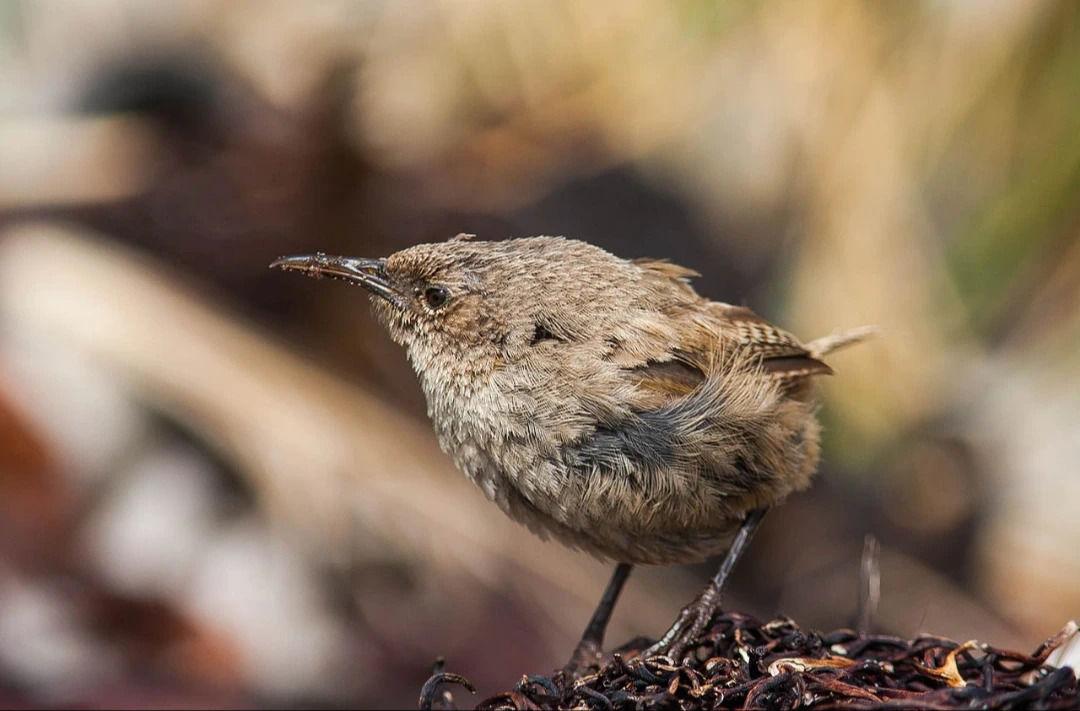
The Cobb’s wren, a small yet resilient passerine bird, epitomizes the unique avian diversity of the Falkland Islands. With its unassuming brown plumage and lively song, this species has adapted remarkably well to the harsh, windswept landscapes it calls home.
The Cobb’s wren’s existence, characterized by its foraging agility, distinctive nesting habits, and the strong territorial bonds it forms, offers a window into the life of island endemics faced with limited resources and challenging conditions. As an insectivorous bird, the Cobb’s wren plays a crucial role in controlling insect populations, contributing to the ecological balance of its habitat.
The study of Cobb’s wren not only enriches our understanding of the Falkland Islands’ natural history but also underscores the importance of preserving these isolated ecosystems for the myriad species that depend on them.
Appearance and Size
The Cobb’s wren is a small bird, measuring about 12 to 14 cm (4.7 to 5.5 inches) in length, and weighing between 12 to 16 grams (0.42 to 0.56 oz). It features a predominantly brown plumage with darker streaks and bars, which provides excellent camouflage against the Falkland Islands’ terrain. Its short wings and sturdy legs are well-suited for its ground-foraging lifestyle, while its sharp bill is adept at extracting insects from the soil and vegetation.
Behaviour
Cobb’s wrens are known for their curious and bold nature, often approaching humans with little fear. They are highly territorial throughout the year, vigorously defending their feeding and nesting areas from intruders. Their vocalizations include a variety of melodious trills and calls, used for communication between mates and signaling territory boundaries.
Diet
Their diet primarily consists of insects and other small invertebrates, which they forage from the ground and under the leaf litter. The Cobb’s wren’s foraging technique, involving quick movements and probing into crevices, highlights its crucial role in controlling insect populations and contributing to the health of its environment.
Reproductive Cycle
Breeding occurs from October to January, with Cobb’s wrens building well-concealed nests in tussock grass, under rocks, or in man-made structures. They typically lay 2 to 6 eggs per clutch, with both parents sharing the duties of incubation and chick rearing. The strong pair bonds and cooperative parenting strategy ensure high survival rates for their offspring.
Habitat and Range
The Cobb’s wren is endemic to the Falkland Islands, favouring tussock grassland, shrubland, and coastal areas that provide ample cover and foraging opportunities. Their distribution is closely linked to the availability of insect prey and suitable nesting sites, reflecting their adaptation to the islands’ specific ecological conditions.
The conservation of the Cobb’s wren is vital for maintaining the biodiversity of the Falkland Islands. Protecting this species and its habitat from introduced predators and human encroachment is crucial for ensuring the survival of one of the islands’ most characteristic birds. Understanding the life and ecological importance of the Cobb’s wren is key to fostering a sustainable relationship with the unique and vulnerable ecosystems of the Falklands, emphasizing the need for dedicated conservation efforts to preserve these irreplaceable natural treasures.
Back To Top
Striated Caracara (Phalcoboenus australis)
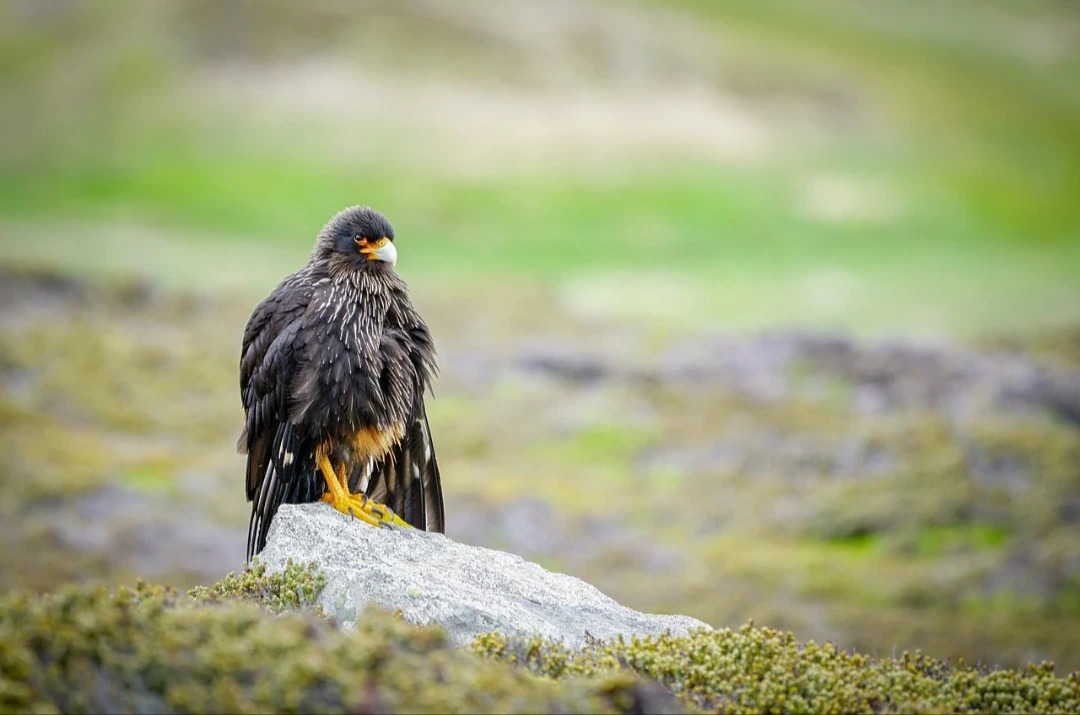
The striated caracara, a bird of prey with a striking appearance and intelligent demeanour, stands as a symbol of the wild and remote landscapes of the Falkland Islands and other sub-Antarctic regions. Known for its bold black and white plumage and curious nature, this raptor navigates its environment with an unmatched adaptability, showcasing the intricate balance of life in these isolated territories.
The striated caracara’s lifestyle, marked by its scavenging habits, opportunistic feeding behaviour, and social nesting practices, offers insight into the survival strategies of birds in extreme southern latitudes. As one of the most southerly distributed raptors, the striated caracara plays a unique role in its ecosystem, contributing to the cycle of nutrients and maintaining the ecological equilibrium.
The study of the striated caracara not only deepens our understanding of avian adaptation to sub-Antarctic ecosystems but also highlights the importance of conserving these specialized birds and their habitats in the face of changing global conditions.
Appearance and Size
The striated caracara is a medium-sized bird of prey, measuring about 56 to 65 cm (22 to 25.5 inches) in length, with a wingspan of approximately 120 to 132 cm (47 to 52 inches), and weighing between 1.3 to 2.3 kg (2.8 to 5 lbs). Its plumage is primarily dark brown to black, with distinctive white streaking on the neck and shoulders and a striking facial mask.
The bird’s powerful build, sharp talons, and hooked beak are indicative of its predatory nature, while its keen eyes reveal a high level of intelligence and curiosity.
Behaviour
Striated caracaras are known for their fearless and inquisitive behavior, often approaching humans and other animals with little hesitation. They are highly social birds, forming small groups or pairs that cooperate in hunting and scavenging. Their ability to solve problems and use tools is a testament to their adaptability and intelligence, making them one of the most intriguing raptors in their range.
Diet
Their diet is opportunistic and varied, including carrion, seabird eggs and chicks, invertebrates, and small mammals. Striated caracaras are also known to scavenge along shorelines and near human settlements, taking advantage of any available food sources. This feeding behavior underscores their role as both predators and scavengers within their ecosystems.
Reproductive Cycle
Breeding takes place in colonies on cliff ledges or amongst tussock grass, where striated caracaras build large stick nests. They typically lay two to three eggs per breeding season, which are incubated by both parents. The chicks are cared for and fed by their parents until they fledge, demonstrating a strong familial bond and cooperative parenting strategy.
Habitat and Range
The striated caracara is primarily found in the Falkland Islands, with smaller populations on other sub-Antarctic islands, including Tierra del Fuego and the Cape Horn archipelago. Their habitat selection is influenced by the availability of nesting sites and food sources, highlighting their dependence on the marine and coastal environments of these southern territories.
The conservation of the striated caracara is crucial for the preservation of the sub-Antarctic region’s biodiversity. Protecting these birds and their natural habitats from the impacts of human activity and environmental change is vital for ensuring the health and stability of these unique ecosystems.
Understanding the ecological role and challenges faced by the striated caracara is key to fostering a sustainable coexistence with these remarkable birds and safeguarding the fragile beauty of their sub-Antarctic homes.
Back To Top
Dark-faced Ground Tyrant (Muscisaxicola maclovianus)
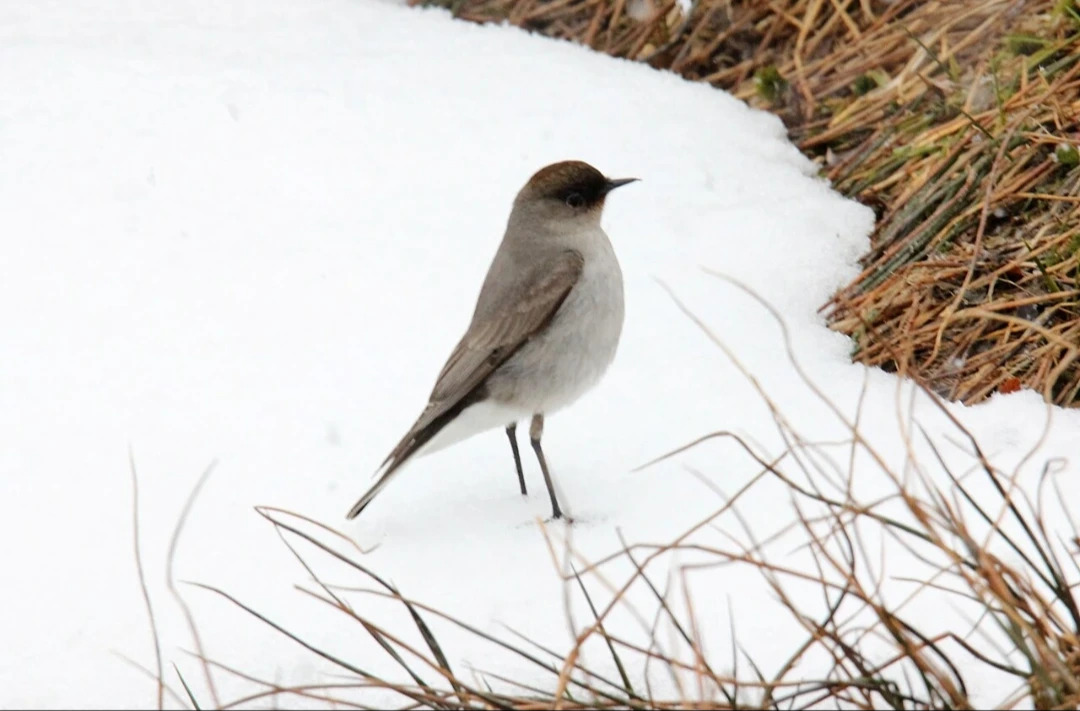
The dark-faced ground tyrant, a small yet hardy passerine, is an emblem of the resilience and adaptability required to inhabit the stark, open landscapes of the southernmost parts of South America and the sub-Antarctic regions. With its muted plumage and distinctive foraging behavior, this species navigates the challenges of life at the edge of the world, where extreme weather conditions and limited resources dictate the rhythms of existence.
The dark-faced ground tyrant’s presence in these remote areas, characterized by its ground-dwelling habits, aerial insect-catching displays, and solitary or pair-based nesting practices, sheds light on the diverse strategies birds employ to thrive in some of the planet’s most inhospitable environments. As an insectivorous bird, the dark-faced ground tyrant contributes to controlling insect populations, thus playing a vital role in the ecological balance of its habitat.
The study of the dark-faced ground tyrant not only enriches our understanding of avian life in extreme southern latitudes but also underscores the importance of preserving these unique ecosystems for the myriad species that rely on them.
Appearance and Size
The dark-faced ground tyrant is a modestly sized bird, measuring about 14 to 18 cm (5.5 to 7 inches) in length, with a relatively subdued colouration that blends seamlessly into its surroundings. Its plumage is primarily greyish-brown, with a darker face that gives the species its name. The bird’s structure is adapted for life on the ground, with strong legs for walking and running, and a bill suited for catching small invertebrates.
Behaviour
Dark-faced ground tyrants exhibit a preference for foraging on the ground, where they pursue insects and other small prey with agility. They are often observed alone or in pairs, displaying a territorial nature, especially during the breeding season. Their flight is characterized by short, low bursts, typically used for catching insects in mid-air or moving between foraging sites.
Diet
Their diet primarily consists of insects and other small invertebrates, which they catch by making quick dashes from a stationary position or by agilely snatching prey from the air. This feeding strategy allows them to exploit the abundance of insect life in their habitats, reflecting their essential role in the local food web.
Reproductive Cycle
Breeding takes place in solitary pairs, with nests constructed on the ground or in low shrubs, hidden among the vegetation to protect against predators. The dark-faced ground tyrant lays two to four eggs, which are incubated by both parents. The chicks are fed a diet of insects until they are ready to fledge and fend for themselves.
Habitat and Range
The dark-faced ground tyrant inhabits open and semi-open landscapes in the southernmost regions of South America, including the windy steppes of Patagonia and the grasslands of Tierra del Fuego. Their adaptation to these environments showcases their ability to thrive in areas with sparse vegetation and harsh climatic conditions.
The conservation of the dark-faced ground tyrant and its habitat is crucial for the preservation of the unique biodiversity of the southern tip of the Americas and the sub-Antarctic islands. By safeguarding these regions from degradation and the impacts of climate change, we ensure the survival of the dark-faced ground tyrant and the complex ecosystems that these resilient birds call home.
Understanding the life and ecological importance of the dark-faced ground tyrant is key to appreciating the fragility and beauty of Earth’s southernmost ecosystems, highlighting the need for concerted conservation efforts to protect these invaluable natural resources.
Back To Top
South Georgia Pipit (Anthus antarcticus)
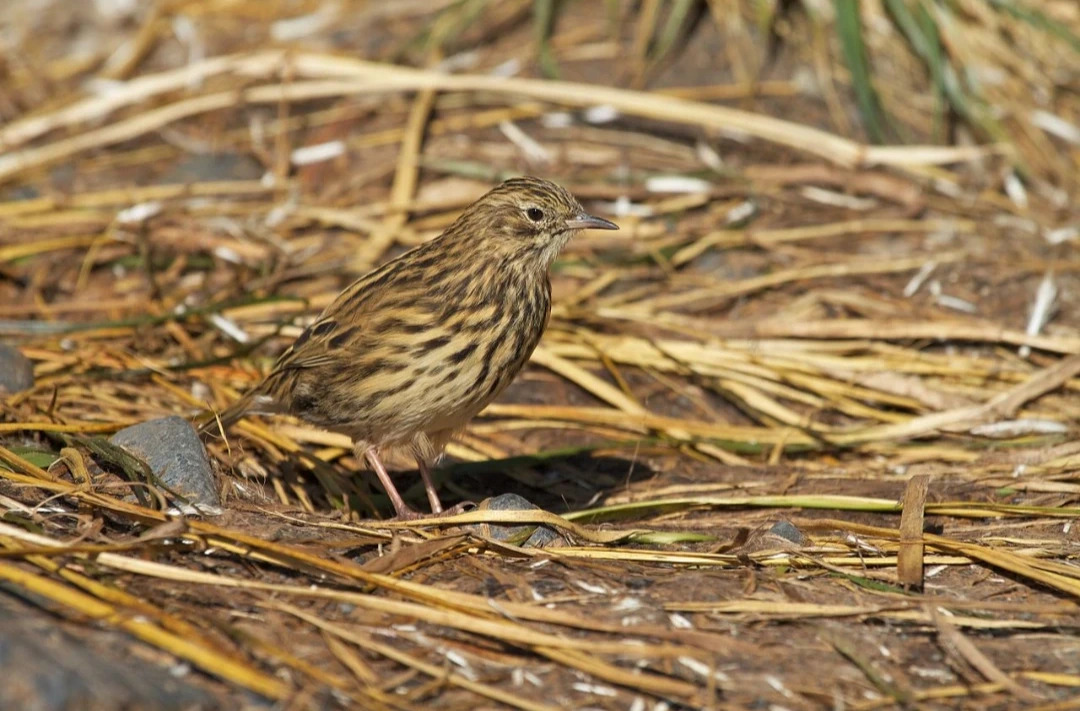
The South Georgia pipit, the southernmost songbird in the world, embodies the remarkable adaptability and resilience of species inhabiting the remote and rugged landscapes of South Georgia Island. This small, unassuming bird, with its melodious song and streaked brown plumage, thrives in the island’s unique ecosystems, from coastal tussock grasslands to inland mountain areas.
The South Georgia pipit’s presence on the island is a testament to the survival strategies of avian species in sub-Antarctic environments, where harsh weather conditions and limited resources shape the daily struggle for existence. As an insectivorous bird, the pipit plays a crucial role in controlling insect populations, contributing to the ecological balance of its habitat.
The study of the South Georgia pipit not only enhances our understanding of biodiversity in extreme southern latitudes but also highlights the importance of conserving these fragile ecosystems for the myriad species that depend on them.
Appearance and Size
The South Georgia pipit is a small bird, measuring about 16 to 19 cm (6.3 to 7.5 inches) in length, with a wingspan of approximately 25 to 28 cm (9.8 to 11 inches), and weighing between 20 to 25 grams (0.7 to 0.88 oz). Its plumage is primarily brown with darker streaks, providing camouflage against the island’s terrain. Its slender build and long legs are adapted for foraging on the ground, while its pointed bill is ideal for catching small invertebrates.
Behaviour
South Georgia pipits exhibit a strong territorial instinct, especially during the breeding season. They are known for their vibrant songs, which males use to attract mates and assert their dominance over territories. These pipits are mostly ground-dwelling, utilizing their agility to navigate the tussock grass and rocky outcrops of their habitat.
Diet
Their diet consists mainly of insects and other small invertebrates, which they forage from the ground and under vegetation. The South Georgia pipit’s feeding behaviour highlights its role as a natural pest controller, aiding in the maintenance of healthy and balanced ecosystems on the island.
Reproductive Cycle
Breeding takes place in the austral summer, with nests typically built on the ground, hidden among tussock grass or under rocks to protect against predators. The pipit lays two to four eggs per clutch, with both parents sharing the responsibilities of incubation and chick rearing, ensuring the survival of their offspring in the challenging sub-Antarctic environment.
Habitat and Range
The South Georgia pipit is one of the endemic birds of South Georgia, occupying a variety of habitats from sea-level grasslands to inland mountainous regions. Their adaptation to this diverse range of environments underscores their resilience and the ecological significance of the island’s varied landscapes.
The conservation of the South Georgia pipit is critical for preserving the unique biodiversity of South Georgia Island. Protecting this species and its natural habitat from the threats of invasive species and climate change is vital for ensuring the continued health of the island’s ecosystems.
Understanding the life and ecological importance of the South Georgia pipit is key to appreciating the complex interplay of life in sub-Antarctic regions, highlighting the need for dedicated efforts to protect these remote and vulnerable natural habitats.
Further reading
Oiseaux has a lot of information about birds of South Georgia. They also have good information about the birds of the Falkland Islands, click here.
Back To Top

